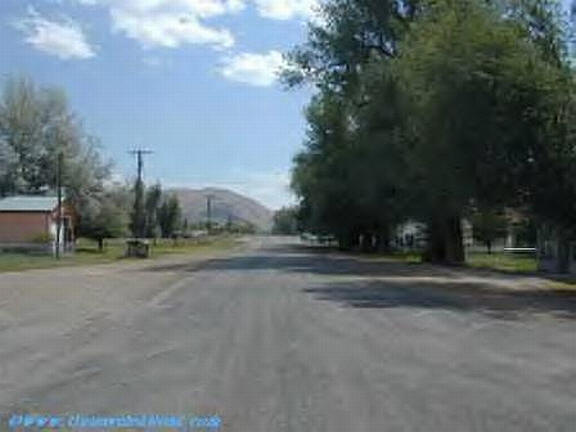
Dingle History

Southbound Dingle Road
Information comes from Treasured Tidbits of Time Volume I by Jens Patrick Wilde and is a condensed version
Although Dingle can trace its beginning to the days when Peg Leg Smith had his trading post in nearby Peg Leg Island, the actual settlement got underway in 1871 when Thomas Rich and William Lee established claims there. John Grimmett followed the next year and by 1873, Mary Oakey and sons Alfred and Hyrum and her daughter settled near what became known as Oakley's Grove, south of the present Dingle store.
Dingle had several names among them Dingle Dell, Big Timber, Peg Leg Island and Cottonwood. Gradually the name stabilized as Dingle. According to LDS Church records, a branch was started in 1875 with elders from Paris in charge until 1877 when William Passey became the presiding elder and held the first church meetings in his home. By 1877 the branch was known as the Dingle Dell Branch. By June 1882, the Dingle Dell branch was organized as the Cottonwood ward. In 1886 by request of the people the name was officially changed to Dingle. Samuel A Wilcox became the Bishop and four years later the post office was established with William Quayle as the postmaster. By the end of that year Dingle had a population of 300 people and was the fifth largest settlement in Bear Lake.
Among the families who came earliest were Felix Barnabee, Eli Bennet, George Bird, John Berrey, Harry Cheeles, Alfred Dorney, Moroni Dayton, David Follick, George H and Hank Cook, William D Ream, Andrew Larsen, The Follicks, Christian Selk and Chester Southworth, Christian Merkley and Boyd Wilcox. About in 1890 things changed rapidly as a call came from the leaders in Salt Lake for colonization of southern Canada around Cardston. Many of the Dingle people left. It was not until the 1920's when dry farming started that Dingle again increased.
The northern most school was located on what was generally referred to as Peg Leg Island and was referred to as the "Gentile" school although there were more Mormons in attendance than others. The southern school located in "downtown" Dingle was the known as the Mormon School. The earliest teachers were Joseph Lewis, Hyrum Oakey, William D Ream and Nora Ellen Crockett.
William Quayle built the first store and hired Boyd Wilcox as the operator. He ran it for three years and turned it over to Joseph Lewis who managed it until 1900. Lewis then decided to build his own store a half mile south where most of the population was. Neither could make a go of it so Lewis sold out to Frank Smedley and the Quayle store went out of business completely.
Dingle had a blacksmith shop for many years operated by Bill Phillips but Phillips was one of the families to go to Canada. A cheese factory was operated for a few years by Chester Southworth and Moroni Dayton. Moroni shipped his product to California. A brass band developed with Hyrum Oakey as the leader. It had a baseball team and its own dramatic society headed by Chester Southworth. For a time the Telluride Power Company, now known as Utah Power & Light rejuvenated the town and provided employment for several men. The main project was the construction of the canals that diverted Bear River into Bear Lake and the construction of dams and head gates at Camp Stewart and Camp Lifton.
About 1900 the Oregon Shortline Railroad built
a depot for Dingle about two miles east of the community. It operated for
about five miles but never provided the necessary revenue to continue. By
1903 the telephone had reached the community but electricity did not arrive
until 1928.